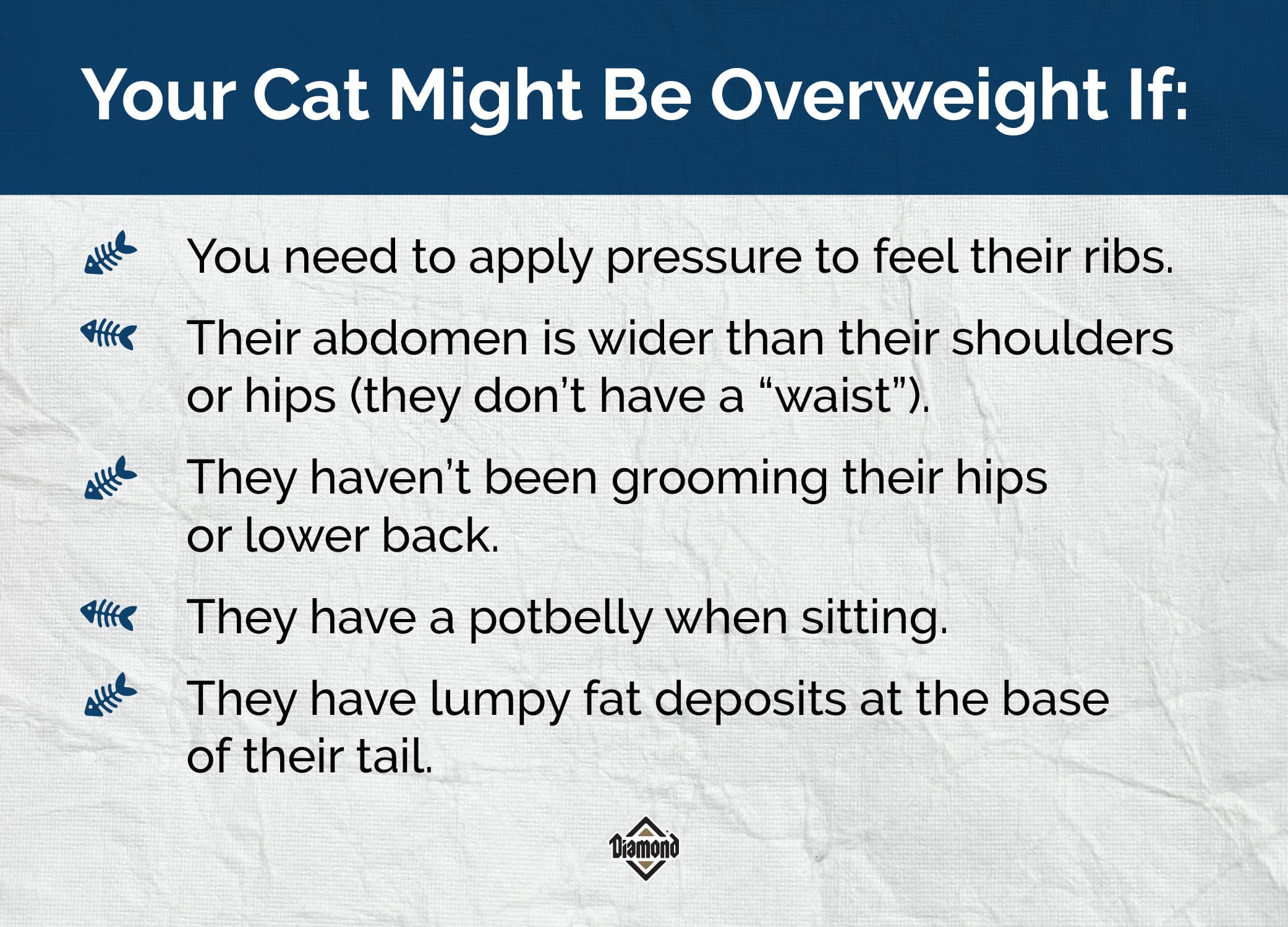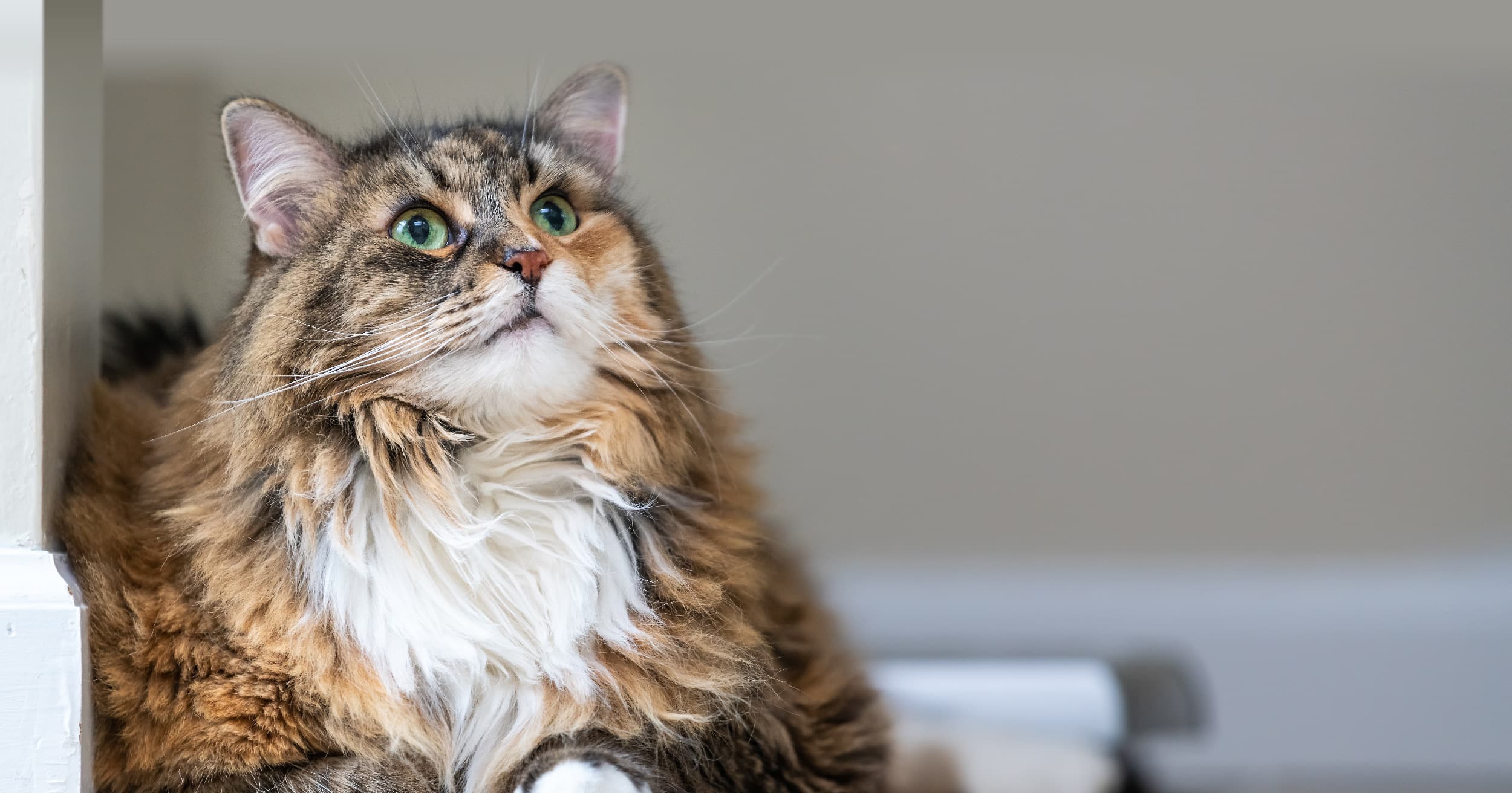Have you looked at your cat and thought, “Hmm, is my cat fat? Or is something else going on?” There are many reasons why your cat can look chubby, ranging from fluffy hair to a medical problem or they really are just a fat little feline. We’ll help you work out if your cat is overweight or if something else could be going on.
Congratulations, It’s Kittens!
If your cat is male or a female who has been spayed, obviously you can rule this one out. But if you have a female cat who isn’t spayed and she lives with a male cat who isn’t neutered, well, you might be about to become a pet grandparent. Similarly, if your female cat spends any time outdoors, she could be pregnant — because you never know who’s jumping over the back fence.
If your cat looks like she’s put on weight over a short period of time, particularly around her abdomen, this could mean bouncing baby kitties are on their way. Other signs of pregnancy in cats include swollen and pink nipples, eating and sleeping more, and vomiting. She may also like to cuddle more than she used to. It’s important to have your veterinarian examine your cat if you think she’s pregnant, so that she and her kittens remain healthy.
A Belly Full of Worms?
If your cat has a potbelly, it may be due to an intestinal parasite infection like roundworms. If it’s a heavy infestation, the worms can cause the abdomen to become distended (enlarged). Kittens are more likely to have intestinal parasites than adult cats, so a potbelly due to worms is more common in kittens. Other symptoms of intestinal parasites include vomiting, diarrhea and appetite loss. It’s important to deworm your cat if they do have intestinal parasites (ask your veterinarian about this) and to prevent them in the first place by using year-round parasite control medication.
Is it a Tumor? Or FIP?
Sometimes health issues can cause cats to have a big belly, including organ enlargement due to an illness (e.g., heart disease), fluid retention (ascites), cancer or a tumor. Another cause of an enlarged abdomen is feline infectious peritonitis (FIP). This viral disease, which is usually fatal, has two forms — effusive (wet) and non-effusive (dry). Cats with the effusive form have noticeable fluid buildup in the abdomen and chest, while cats with the non-effusive form have inflammation of their internal organs. Both forms are usually present to some extent in cats with FIP, according to the Merck Veterinary Manual. Speak with your veterinarian if you’re concerned your cat may have a medical issue.
They’re a Marsupial?
If you notice your cat’s belly flip flops around as they walk, it might be their primordial pouch. This pendulous pouch is a collection of excess fat, loose skin and fur that typically runs the length of the abdomen and is usually more noticeable near the back legs. You can’t really see it in some cats, but it is obvious in other cats, particularly older cats and certain breeds like the Bengal, the Egyptian mau or the pixiebob. It’s not just a domestic cat thing either — you can see it on lions, tigers and other large wild cats.
While it’s normal for cats to have a primordial pouch, no one is really sure why they have it. The most popular theory is that it provides extra padding and protection for their internal organs if they get into a scuffle with prey or other cats. But the primordial pouch may also make it easier for cats to stretch, flex and run when they need to escape from a threat.
They’re a Fluff Ball?
Sometimes your cat’s physical features can make it hard to know what’s really going on with their body. If you’ve got a long-haired cat like a Persian, Norwegian forest cat or Turkish angora, it can be hard to see their body under all that fluff. Are they overweight or is it just fur? Similarly, breeds like ragdolls and Maine coon cats are naturally big, so next to a smaller breed, they might look like they’re packing on some extra pounds even though they’re not. Our next section can help you work out if it’s fluff or fat.
Nope, They’re Just Chubby
If it’s not a tumor, your cat’s not a kangaroo look-alike and they’ve got short hair, well, they just might be f-a-t. There are a few tests you can do to see whether your cat is overweight or obese. You can use a body condition score (BCS) system like the one developed by the Association for Pet Obesity Prevention. Cats with a BCS between 6 and 9 are considered overweight or obese. You can calculate your cat’s body mass index (BMI) — if it’s over 42, they’re considered obese. You can also look for the signs we’ve listed below.

Your veterinarian is the best person to help you figure out if your cat is a healthy weight, overweight or has a medical issue. So if you aren’t sure if your cat is overweight or something else is going on, schedule a checkup.
RELATED POST: Fat Cats Face Serious Health Risks







